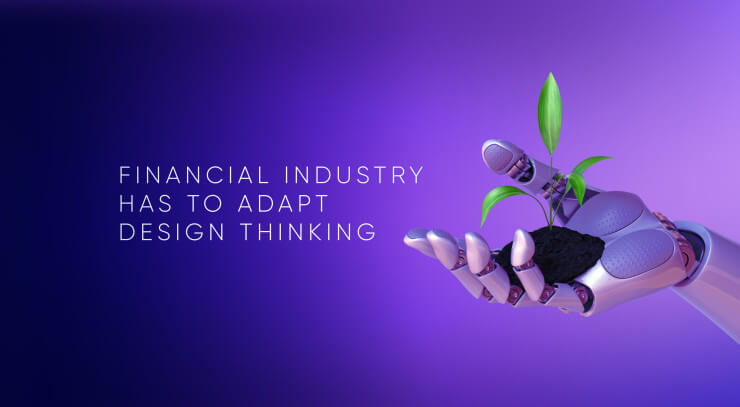What is design thinking in banking?
Design thinking in banking is used as a design concept creation framework that was developed from creativity techniques that first appeared in the 1950s. The design thinking process flow allows the generation of innovative product ideas that match user needs and expectations. A design thinking approach to innovation is a problem-solving methodology that consists of 5 basic steps: Empathize, Define, Ideate, Prototype and Test.
Thus, design thinking in finance is a five-stage process used to architect digital financial products. At UXDA, we explain all the steps using the Double Diamond model, in which the first diamond helps to define the Problem, and the second one helps to find the Solution. Using an empathic approach to design thinking, the UX design process helps to identify valuable insights about the financial product from a customer perspective. That is why the importance of the design thinking process cannot be underestimated.
UXDA uses the benefits of the design thinking approach as part of its unique financial UX design methodology to ensure a step-by-step process in engineering digital financial solutions.
Check out the best UXDA articles about design thinking in banking.
10 Powerful Design Thinking Quotes To Shake The Banking Industry
Embrace the essence of design and customer-centered thinking in the form of a brilliant quotes collection.
What Do the Financial Experts Say About UXDA's Work?
You will be surprised to hear what our customers reveal about UXDA work process in independent Clutch research. I am happy to announce that UXDA’s NPS (Net Promoter Score) has reached 76 points — the same level as Apple, Amazon, and Netflix.
Banking Innovation: 5 Traits of Digital Disruption in Banking Industry
In 2018 Apple became the world's first trillion-dollar company, and Nokia failed. How this could explain digital disruption in banking?
To Survive, Financial Industry Has to Adapt Design Thinking in Banking
Design Thinking is needed to adapt banking services to the new world. In a human-centered economy your service has to be user-centered.
- 1
- 2






